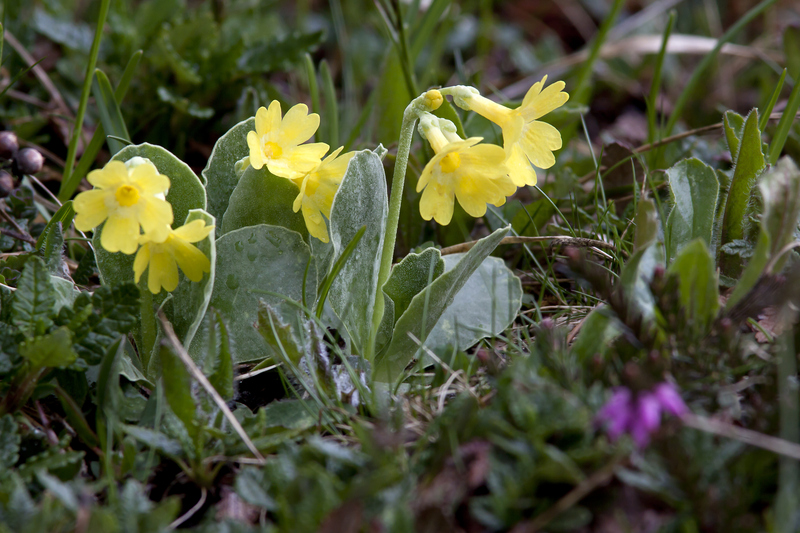Transform Your Garden with Hedge Trimming Shapes and Techniques
Posted on 05/09/2025
Transform Your Garden with Hedge Trimming Shapes and Techniques
Hedge trimming is an essential gardening skill that can instantly elevate the appearance and functionality of any outdoor space. By mastering different hedge trimming shapes and techniques, you can not only keep your garden neat and tidy but also add a touch of art and sophistication. In this comprehensive guide, we'll explore the fascinating world of hedge shaping, offer expert tips, and help you transform your garden like a pro.
Why Hedge Trimming Is Essential for Garden Transformation
A well-trimmed hedge can redefine the landscape, offering everything from privacy and shelter to visual structure. Beyond aesthetic value, regular hedge maintenance is also vital for plant health--preventing diseases, encouraging dense growth, and ensuring longevity.
- Aesthetic Appeal: Artistic hedge shapes create unique focal points and accentuate your garden's design elements.
- Structural Division: Hedges can serve as living barriers, guiding movement and defining functional areas.
- Wildlife Habitat: A healthy, dense hedge supports birds and beneficial insects in your garden ecosystem.
Key Benefits of Masterful Hedge Shaping:
- Enhances garden symmetry and visual flow
- Boosts curb appeal and property value
- Promotes vigorous and healthy plant growth
- Provides increased privacy and wind protection

Understanding the Basics: Types of Hedges and Their Growth Habits
Before you start crafting artistic hedge trimming designs, it's vital to know the species you're working with. The growth habit of your hedge plants will influence the shapes and maintenance schedule.
- Evergreen Hedges: Such as Boxwood, Yew, and Privet are favorites for formal shapes due to their dense foliage and slow growth.
- Deciduous Hedges: Like Hornbeam and Beech, provide seasonal interest, with lush summer growth and striking winter silhouettes.
- Flowering Hedges: Escallonia, Lavender, and Forsythia introduce vibrant colors and attract pollinators.
Tip: Always select suitable hedge varieties for the shape and function you envision. Not all hedges are ideal for complex topiary!
Popular Hedge Trimming Shapes to Elevate Your Garden
Garden design enthusiasts know that hedge shapes offer endless creative possibilities. Here are the most admired styles:
1. Formal (Geometric) Shapes
- Square Hedges: Classic and symmetrical, offering a clean, contemporary look.
- Rectangular or Box Hedges: Ideal as borders, pathways, or garden dividers.
- Ball or Sphere: Adds a playful, sculptural accent to garden beds or corners.
- Conical: Elegant and upright, great for accentuating gates or entrances.
2. Informal (Naturalistic) Shapes
- Curving Waves: Mimic natural wind-blown forms, perfect for cottage gardens.
- Cascading and Tapered Designs: Offer dynamic flow and soften boundaries.
- Randomized Heights: Blend seamlessly with wild landscapes.
3. Artistic Topiary and Creative Forms
- Animal Figures: Delightful, whimsical shapes for focal points or children's gardens.
- Spirals, Arches, and Obelisks: Advanced shapes for skilled trimmers seeking a statement piece.
- Maze Hedges: Create interactive and enchanting garden spaces.
4. Functional Hedge Designs
- Privacy Screens: Dense, tall hedges to shield from neighbors or wind.
- Hedge Fences: Serve as living property lines.
- Parterres and Edging: Low, neatly trimmed hedges outlining flower beds or lawns.
Whether your style is formal or freeform, there's a hedge-shaping technique perfect for your garden goals.
Essential Tools for Hedge Trimming Success
Providing your garden with a makeover starts with having the right equipment. Here are the must-have tools for shaping and maintaining hedges:
- Hedge Shears: Manual or powered, ideal for precision cutting and finishing touches.
- Electric or Gas Hedge Trimmers: Great for larger hedges and faster results.
- Pruning Loppers: For removing thicker stems and rejuvenation pruning.
- String, Stakes, and Measuring Tape: Ensure straight lines and symmetrical shapes.
- Ladders and Safety Gear: For accessing high or intricate areas, with protection for eyes and hands.
Maintenance Tip: Keep blades sharp and clean for healthy cuts and to minimize plant stress.
Step-by-Step Hedge Trimming Techniques for Stunning Results
1. Planning Your Hedge Trimming Shape
- Envision the final shape and outline it using string or chalk lines.
- For formal shapes, measure carefully at multiple points for consistency.
- For topiary, consider making a template or wire frame to guide your cuts.
2. Timing Your Trimming
- Most hedges benefit from shaping in late spring or early summer, after new growth has emerged.
- Avoid pruning during extreme heat or when frost is expected, to prevent stress.
- Light maintenance pruning can be performed throughout the growing season as needed.
3. The Technique: How to Trim for Perfection
- Start from the Bottom Up: Work upwards for a balanced, even finish and better visibility.
- Angle the Sides: Trim the base of the hedge slightly wider than the top to allow light to reach lower branches (known as a batter), promoting healthy, dense growth from ground to top.
- Short, Controlled Cuts: Avoid hacking off large portions at once--gradual shaping delivers precision and reduces the risk of unsightly gaps.
- Step Back Regularly: Periodically assess your progress from a distance to catch any irregularities early.
4. Advanced Topiary Techniques
For sculpting intricate shapes:
- Create or purchase wire frames as guides for complex animal forms or spirals.
- Trim a little at a time, allowing regrowth to refine the shape over several seasons.
- Patience and regular maintenance are vital to achieving and sustaining challenging designs.
Common Mistakes to Avoid When Shaping Hedges
Even experienced gardeners can fall into these pitfalls when trimming hedges:
- Neglecting the Base: An overly narrow hedge base results in leggy, sparse lower sections.
- Trimming Too Late or Early: Pruning at the wrong time of year impacts flowering and growth potential.
- Improper Tool Use: Dull or dirty blades can crush stems, invite disease, and create uneven cuts.
- Over-Trimming: Removing too much foliage at once weakens the hedge and may prevent recovery.
Maintaining Your Hedge's Beauty: Year-Round Care Tips
Once you've transformed your garden with beautiful hedge trimming shapes, ongoing care preserves vital health and stunning appearance:
- Feed and Mulch: Apply a balanced fertilizer in spring and mulch to retain moisture and suppress weeds.
- Water Wisely: Especially in dry periods, new hedges require consistent watering to establish strong roots.
- Disease Watch: Look for signs of blight, rust, or insect activity and address early with suitable treatments.
- Regular Pruning: Light trims encourage dense growth and maintain crisp lines, while a yearly deep prune rejuvenates aging hedges.
Inspiring Ideas: Hedge Shapes and Garden Styles
Explore combinations of hedge shapes to complement your overall garden design:
- English Formal Gardens: Use straight-edged box hedges to frame rose beds and gravel paths.
- Modern Landscapes: Incorporate geometric balls or rectangular forms amid architectural planters for a contemporary vibe.
- Wildlife Havens: Blend informal, undulating lines and flowering species for a natural, welcoming space.
- Zen and Japanese Gardens: Favor rounded, cloud-pruned forms (Niwaki) for tranquil, harmonious energy.
- Themed Playgrounds: Try playful topiary animals or maze hedges to delight children and visitors.
Let your imagination guide your garden transformation--there are no limits when it comes to hedge artistry!

Frequently Asked Questions About Hedge Trimming Techniques
- How often should I trim my hedge?
Answer: Most formal hedges benefit from two to three trimmings per year, while informal or flowering hedges may need just one annual prune after blooming. - Can I rejuvenate an old, overgrown hedge?
Answer: Yes! Many hedge species tolerate hard pruning in late winter or early spring. Cut back one side at a time to allow recovery, and feed regularly for best results. - Is it possible to shape flowering hedges?
Answer: Absolutely, but always trim after flowering to avoid cutting buds for the next season. - What's the best time of year for hedge shaping?
Answer: Most non-flowering hedges are best trimmed in late spring and again in midsummer. Avoid pruning during frost or drought conditions.
Transform Your Garden Today with Creative Hedge Shaping
Hedge trimming shapes and techniques provide an accessible way for any gardener--novice or expert--to reimagine their outdoor space. Whether aiming for formal geometry, playful topiary, or naturalistic silhouettes, the right approach will keep your garden vibrant and beautiful throughout the seasons.
- Start small with simple designs and build confidence as you progress.
- Experiment with shapes and plant varieties for creative results.
- Stay patient; stunning hedge artistry develops over time with regular care and attention.
Ready to begin? With mindful planning, proper technique, and a touch of creativity, you'll transform your garden into a lush, living masterpiece that family and friends will admire all year long. Don't forget to regularly revisit these hedge shaping techniques and share your results with fellow gardeners--nature's canvas is ready for your vision!



